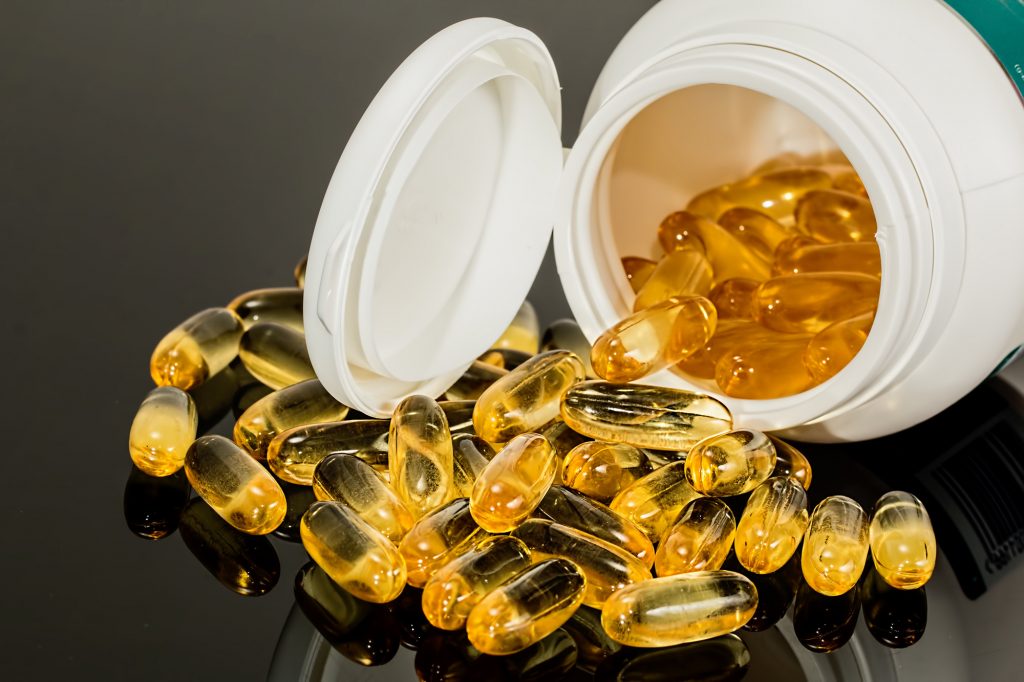Barley Nutrition – How to use barley nutrition to lower cholesterol
Barley contains the same soluble fiber and beta-glucan as oats. Individuals who regularly consume barley have lower LDL cholesterol, triglycerides, and total cholesterol.
A review of studies found the beta glucan in barley linked to decreased total cholesterol of 13 mg/dl, decreased LDL cholesterol of 10 mg/dl, and a reduced triglyceride level of 12 mg/dl. The review found no relationship between barley intake and HDL cholesterol. Beta-glucan is a type soluble fiber.
There are two types of dietary fiber – soluble and insoluble. You want to include between 25-35 grams of dietary fiber in your diet everyday. Of this, soluble fiber should make up 15 grams. Soluble fiber promotes lower total cholesterol and LDL cholesterol levels.
Barley nutrition is unique in that it contains fiber throughout the entire grain kernel. For most grains, when the outer bran layer is removed you’ve also removed the fiber. This isn’t the case with barley. Pearled barley is the easiest form of barley to find. Even though the grain is processed to remove the hull, bran, and some of the inner layer, it still provides 3 grams of dietary fiber in a half cup serving. Other varieties of barley include scotch or pot barley, barley flakes, quick-cooking barley, and hulled or hull-less barley.
Including barley as a regular part of your diet is a nutritious and simple way to promote heart health, lower LDL cholesterol, and lower total cholesterol levels.
Be sure to sign up for the free e-course How to Lower Cholesterol in 8 Simple Steps.
All the best,
Lisa Nelson RD
Heart Healthy Tips
Lower LDL Cholesterol Diet – Step 4
Let’s do a quick review. Step 1 of a diet to lower LDL cholesterol is to reduce saturated fat intake, step 2 increase soluble fiber, and step 3 increase plant sterol intake. The fourth step does not involve diet, but is an important part of maintaining a low LDL cholesterol level.
Here is the fourth of four options for lowering LDL cholesterol:
Physical Activity
Inactivity can cause higher cholesterol levels. Increase physical activity to increase HDL, lower LDL, and lower triglyceride levels. Check with your physician before starting an exercise program if you’re not currently active.
Lower LDL Cholesterol Diet – Step 1
Lower LDL Cholesterol Diet – Step 2
Lower LDL Cholesterol Diet – Step 3
Receive a step by step plan to promote heart health with a Mini Diet Makeover. As a special New Year’s bonus you’ll receive a complimentary copy of the Calorie Counter for Dummies. Learn more here – https://www.lisanelsonrd.com/minidietmakeover.html
All the best,
Lisa Nelson RD
How to Lower Cholesterol in 8 Simple Steps
Lower LDL Cholesterol Diet – Step 2
As we covered in Lower LDL Cholesterol Diet – Step 1, LDL (bad) cholesterol levels should be less than 130 mg/dl and ideally less than 100 mg/dl.
Here is the second of four options for lower LDL cholesterol diet:
Soluble Fiber
Increase dietary fiber, especially soluble fiber. Eat 25-35 grams of fiber daily and of this at least 15 grams should be soluble fiber. Research has shown that for every 1-2 grams of daily soluble fiber intake, LDL (bad) cholesterol is lowered 1%.
Sources of soluble fiber include:
Oat and oat bran
Legumes (dried beans and peas)
Nuts
Barley, rye
Flaxseed
Fruits (i.e. oranges, apples, prunes, plums, berries)
Vegetables (i.e. carrots, broccoli, potatoes, sweet potatoes, onions)
Psyllium husk
Learn more here about a high fiber diet plan to lower cholesterol here.
Lower LDL Cholesterol Diet – Step 3
All the best,
Lisa Nelson RD
How to Lower Cholesterol in 8 Simple Steps
Lower Cholesterol – How do I increase HDL cholesterol?

Finally, you want more of something instead of less! HDL (high-density lipoprotein) cholesterol is also known as the “good” cholesterol. HDL removes cholesterol from your bloodstream and carries it back to the liver. I like to think of HDL as a vacuum cleaner, picking up cholesterol LDL leaves behind in your arteries. HDL should be greater than 40 mg/dL, ideally greater than 60 mg/dL.
Physical Activity
One of the best ways to increase your HDL is through physical activity, specifically aerobic activity (jogging, swimming, biking). For results, you need at least 120 minutes of moderate physical activity each week. In this case, vigorous activity does not have more of an impact, but duration does. The longer you work out the greater them impact on HDL. Work your way up to a minimum of 30 minutes 4 days/week. If you’re not currently physically active, consult your MD before starting an exercise program.
Saturated and Trans Fats
Limiting unhealthy fats will also impact HDL, so look at your saturated fat and trans fat intake and see where you can make cuts. Your total fat intake for the day should be limited to 30% of your daily calories. Of this 30%, only 10% should be from saturated fat and ideally zero from trans fats. To attain these levels you’ll need to select healthy choices when dining out, read food labels, select healthy fats when cooking, select lean cuts of meat, etc.
Omega 3’s
Selecting healthy fats, such as omega 3’s, will raise HDL while lowering LDL. Incorporating healthy omega 3 fatty acids will also improve your total cholesterol to HDL ratio. Also, look for sources rich in omega 3 fatty acids you can add to your diet, such as fish and ground flaxseed..
Dietary Fiber
A high fiber diet does not directly boost HDL levels. However, a high fiber diet plays a role in lowering LDL cholesterol. As LDL is lowered, your Total Cholesterol to HDL ratio improves. For the greatest impact, eat a diet especially rich in soluble fiber and select whole grain products, fruits, and vegetables daily.
Alcohol
Alcohol plays a role in raising HDL levels also. I’m not a big advocate of using alcohol to raise HDL, so if you already consume alcohol 1-2 drinks per day can raise levels. More than 1-2 drinks per day will increase your health problems. If you do not drink, do not start.
All the best,
Lisa Nelson RD
How to Lower Cholesterol in 8 Simple Steps
Lower Cholesterol – How much omega 3 do you need to lower cholesterol?

Increasing the amount of omega-3 fats in our diet and decreasing the amount of omega-6 is beneficial in reducing your risk for heart disease. Most American’s consume a high omega-6 diet, with omega 3 being a common deficiency. Omega 3 deficiencies and the imbalance between omega 3 and omega 6 intakes have been linked with serious conditions, including heart attacks. Successfully maintaining a ratio of 4:1 to 1:1 omega 6 to omega 3 will help lower cholesterol levels and control high blood pressure.
Now, how much omega 3 do you need to add?
This is under debate and more research is being done. Right now the range experts recommend is from 500-2000 mg/day. Here are the current American Heart Association (AHA) recommendations.
The AHA recommends that individuals without heart disease eat a variety of fish twice a week, use heart healthy oils (flaxseed, canola, soybean oils), and consume flaxseed and walnuts.
For individuals with heart disease, the AHA recommends 1 g of EPA (eicosapentanoic acid) + DHA (docosahexaenoic acid) daily, preferably from fatty fish.
The AHA recommends 2 to 4 g of EPA + DHA daily, under physician’s care only, for individuals that need to lower triglycerides. High doses, > 3 grams/day, can result in excessive bleeding. (Do not self medicate! Talk to your MD before supplementing greater than 2 grams.)
Omega 3 Content of Different Foods
Wild Salmon, 4 oz. 1700 mg (DHA 700 mg, EPA 400 mg)
Tuna canned in water, 4 oz. 300 mg (DHA 200 mg, EPA 50 mg)
Cod, 4 oz. 600 mg (DHA 160 mg, EPA 50 mg)
Flaxseed, 1 Tbsp. 1000 mg (ALA – alpha–linolenic acid – 1000 mg)
Soybeans, dried, cooked ½ cup 500 mg (DHA/EPA 250 mg, ALA 250 mg)
Walnuts, 1 oz. 2570 mg (ALA 2570 mg)
Pecans, 1 oz. 280 mg (ALA 280 mg)
Wheat germ, ¼ cup 210 mg (ALA 210 mg)
Canola oil, 1 Tbsp 1300 mg (ALA 1300 mg)
Olive oil, 1 Tbsp 100 mg (ALA 100 mg)
Now, there’s a reason I included details on amounts of ALA, DHA and EPA for each omega 3 source. Right now, DHA and EPA have a greater link with lower cholesterol levels, lower triglycerides, and higher HDL levels than ALA. The body is able to convert ALA to EPA and DHA, but the conversion rate is low; therefore, it is best to include high DHA and EPA sources in your eating plan.
My recommendation:
As a preventive measure and to promote lower cholesterol and blood pressure control, I recommend eating fish twice a week, select a supplement that will provide you at least 1000 mg of omega 3 fatty acids daily (choose a good source of DHA and EPA), and use ground flaxseed when appropriate in your meal preparation.
February is American Heart Month. In recognition of American Heart Month you can access Heart Health Made Easy at a 25% savings. Learn more about this take action guide to lower cholesterol and blood pressure at http://www.hearthealthmadeeasy.com.
All the best,
Lisa Nelson RD
High Fiber Diet Plan to Lower Cholesterol and Lose Weight

Do you have high cholesterol? Increase your fiber!
Do you have high blood pressure? Increase your fiber!
Are you overweight? Increase your fiber!
What is it with fiber (also known as roughage)? It seems to play a role in just about all our health problems. Well, as far as blood pressure and cholesterol go, dietary fiber binds to cholesterol in circulation and helps remove it from the body. Research has shown that for every 1-2 grams of daily soluble fiber intake, LDL (bad) cholesterol is lowered 1%.
On the weight control side of things, a high fiber diet plan increases satiety (how full you feel), aiding efforts to lose weight and/or maintain a healthy weight.
4 Things You Need to Know to Use Dietary Fiber to Lower Cholesterol:
1. There are two types of fiber.
Fiber Insoluble
Insoluble fiber remains relatively intact as it passes through the digestive system. The primary function of insoluble fiber is to move waste through the intestines and maintain intestinal acid balance.
Fiber Soluble
Soluble fiber is the type of fiber responsible for lowering total cholesterol and LDL (bad) cholesterol levels.
2. Sources of insoluble fiber
Fruit skins and root vegetable skins
Vegetables (green beans, celery, cauliflower, zucchini, beets, turnips, potato skins, and dark green leafy vegetables)
Wheat and whole-wheat products
Wheat oats
Corn bran
Seeds and nuts
3. Sources of soluble fiber
Oat and oat bran
Legumes (dried beans and peas)
Nuts
Barley, rye
Flaxseed
Fruits (i.e. oranges, apples, prunes, plums, berries)
Vegetables (i.e. carrots, broccoli, potatoes, sweet potatoes, onions)
Psyllium husk
Shoot for 25-35 grams of dietary fiber everyday. Of this fiber, soluble fiber should make up 15 grams. The average US dietary fiber intake is 12-18 grams/day.
If your current diet is very low in dietary fiber, don’t increase to 35 grams overnight. A sudden increase will result in gastrointestinal (stomach) distress and unpleasant side effects (flatulence and diarrhea). You want to increase your fiber intake gradually.
Bottom Line:
Select high fiber foods, especially foods that contain soluble fiber. I once heard a gastroenterologist say he would be out of a job if everyone just ate more beans!
February is American Heart Month. In recognition of American Heart Month you can access Heart Health Made Easy at a 25% savings. Learn more about this take action guide to lower cholesterol and blood pressure at http://www.hearthealthmadeeasy.com.
All the best,
Lisa Nelson RD



